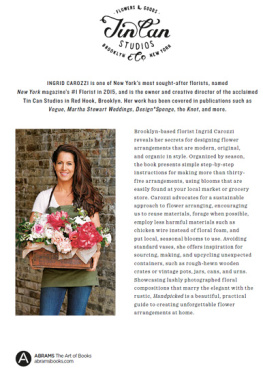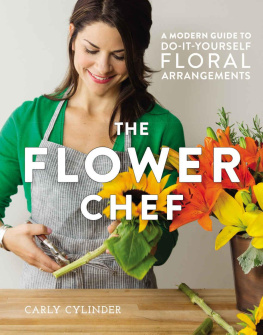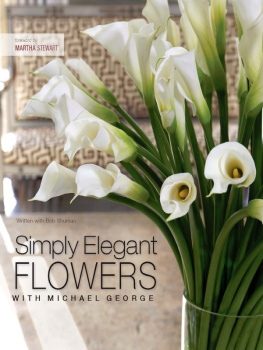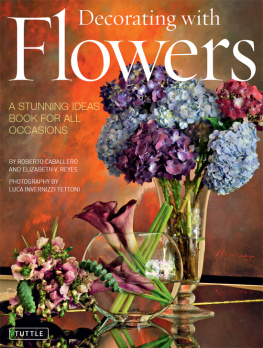Contents
Guide
Page List
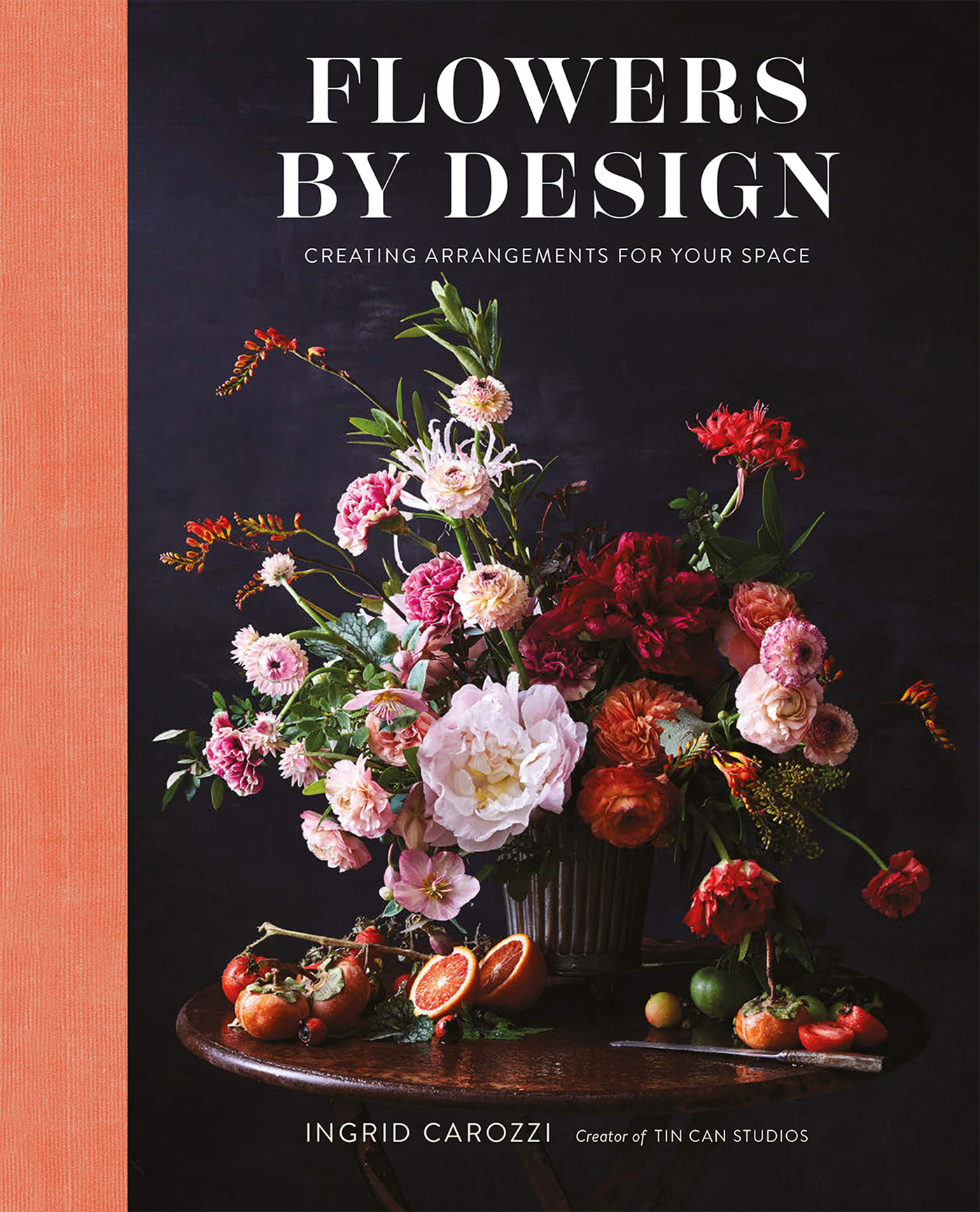




for Stella
CONTENTS


INTRODUCTION
Flowers speak to us in a language that knows no borders. They move us and thrill us, evoke joy and sadness, and call our attention to the beauty that fills our world. Put a simple arrangement on the table and watch your home come alive.
We know how happy flowers can make us, and I for one was not a bit surprised to learn that this had actually been scientifically proventhe act of giving flowers, as it turns out, stimulates the production of the feel-good hormone oxytocin, while receiving them triggers the release of dopamine.
As the natural wonders they are, flowers are truly transformative. Just looking at flowers, touching them, or watching them grow increases our sense of well-beingand receiving them makes us feel appreciated and loved. I dont think I had fully come to appreciate the power of flowers before my first book, Handpicked, was published a few years ago and I started hearing from people from all over the globe. I was moved to learn that my story and what I do had inspired people, young and old, to take up the trade, some even on a professional level, and to pursue this as a new hobby.
The thought that something I do here in Brooklyn can influence someone an ocean or two away is hard for me to wrap my head around sometimes. But the proof comes when a student at a workshop brings in a copy of my book that they bought from Amazon Mexico and then asks me to sign it, or when someone texts me a picture of my book cover from an independent bookstore in Australia, Germany, England, or Sweden. I still get these sweet messages every week! Having lived in six different countries, it feels pretty special to be connected to the world in this way, through my love for flowers.
For me, flowers have always been about people and the way they bring us together. So when I was asked to come up with some ideas for a follow-up to my book, I didnt have to think that hard or for that long.
I wanted to showcase my work and the way I feel about flowers, what I know they can offer to each of us. I drew on the people in my life for inspiration, as well as their own relationships to flowers. And Im excited to share all the insights and knowledge I was able to gather here. Writing a book is such an incredible honor, and I hope each one of you who reads this book will get a sense of who I am and what I do, and that my love of flowers will become yours as well.
Why Flowers Make Us Happy, Loretta G. Breuning, PhD, Psychology Today, Jan 21, 2017.
HOW I GOT HERE
I get questions about my work all the time, and the most common of them is: How do you become a florist?
For me, it was a little bit of chance that brought me into the floral design business. Before getting my degree from Parsons School of Design, I worked as an event planner for The Swedish-American Chamber of Commerce in New York. When my former boss called me up years later to ask me to come up with a floral concept for an event for them, I was surprised, to say the least. It was a black-tie affair called From Farm to Fork, where growers, chefs, and food purveyors were invited to share their philosophies on food and sustainability.
I had no previous experience with flowers, but as a designer I knew how to develop a concept, and my former boss was convinced I was the right person for the job, so I accepted the challenge.
My thoughts went immediately to what brought all these people together: fresh produce and sustainability. I have always loved to cook, and working with flowers was in many ways similar to putting a meal together. In both pursuits, you do everything you can to source the best, preferably local and seasonal, ingredients; you spend time and attention on your prep work and execution; and once you put everything together you present the results and hope that the person sharing your meal or receiving your flower arrangement is blown away. My favorite food editor Sam Sifton once wrote: There is great pleasure to be had in cooking for others, and I feel the same way about working with flowers. To me, a thoughtfully composed arrangement gets its soul once it is shared with another person.
The result was flower boxes I built myself from salvaged wood and filled with artichokes, crown dill, decorative cabbages, berries, and fresh flowers. I took a chance, and it worked out. The event was successful, and the reactions to my arrangements were so strong that I started to think that this might be something I was good at.
Floristry is hard work. On a daily basis I spend more time washing out buckets and schlepping stuff from place to place in taxis and trucks than arranging flowers. Building a successful business often means spending hours on the phone with clients, explaining pricing and logistics and discussing design. A lot of my time is also spent recruiting new talent, training them, and motivating a team. A pretty small part of my workweek, I would say no more than twenty percent, is actually spent arranging flowers. But at the end of the day, I wouldnt have it any other way.
As much as I love what I do, solely the love of flowers is not enough. I regularly find myself at the flower market when they open, at five thirty A.M., and it is still dark outside. And if I had an event the night before, I may not have had more than couple of hours to sleep.


So if you dream of becoming a florist, as many of you do, my advice would be to educate yourself first. Take some classes. There are a number of great flower schools out therein fact, I have taken courses and teach at a few of themand I cannot emphasize enough how important it is to learn how to condition and care for the flowers you are going to work with. Get an internship with a well-established florist in your area where you can see the less glamorous side of floristry. Take some workshops with your favorite florists. There are so many wonderful and talented floral designers out there who, just like me, love to teach. So see for yourself how you like the actual work.
There are so many designers in the field these days, but few actually know flower care. Buying and arranging flowers for yourself is one thing; handling commercial accounts is another altogether. You can make the most beautiful flower arrangements in the world, but in order to be successful (and keep your clients!), you have to keep your flowers healthy and alive.
In the back of this book I list a few schools I have personal knowledge about, where you can learn the basics of sustainable floristry and build a foundation to stand on.



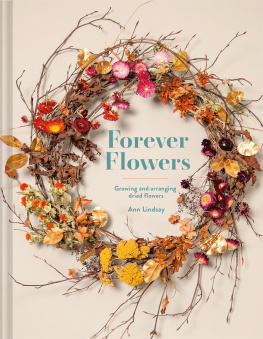


![Shinichi Nagatsuka [永塚慎] - Modern Japanese Ikebana: Elegant Flower Arrangements for Your Home](/uploads/posts/book/320284/thumbs/shinichi-nagatsuka-modern-japanese.jpg)
![Shinichi Nagatsuka [永塚慎] - Easy Ikebana: 30 Beautiful Flower Arrangements You Can Make in Three Simple Steps](/uploads/posts/book/306395/thumbs/shinichi-nagatsuka-easy-ikebana-30.jpg)
